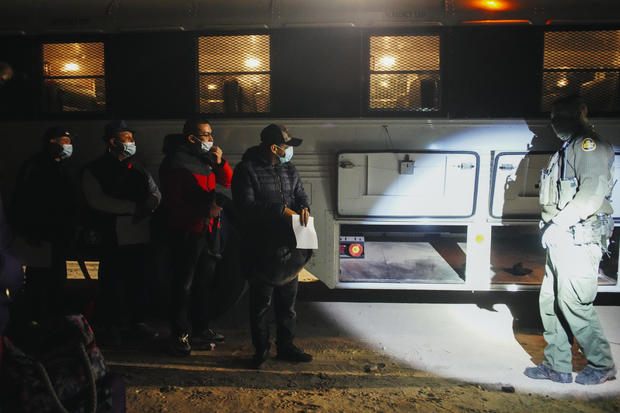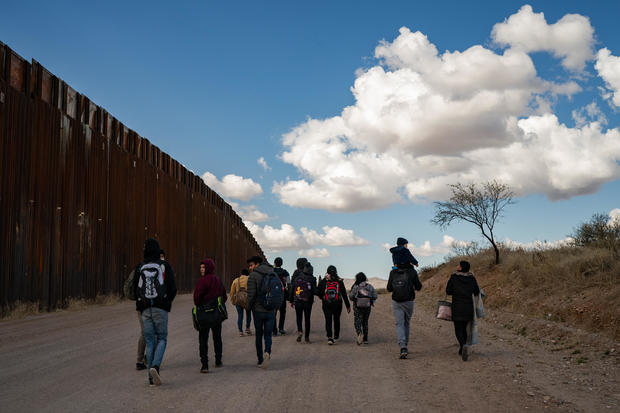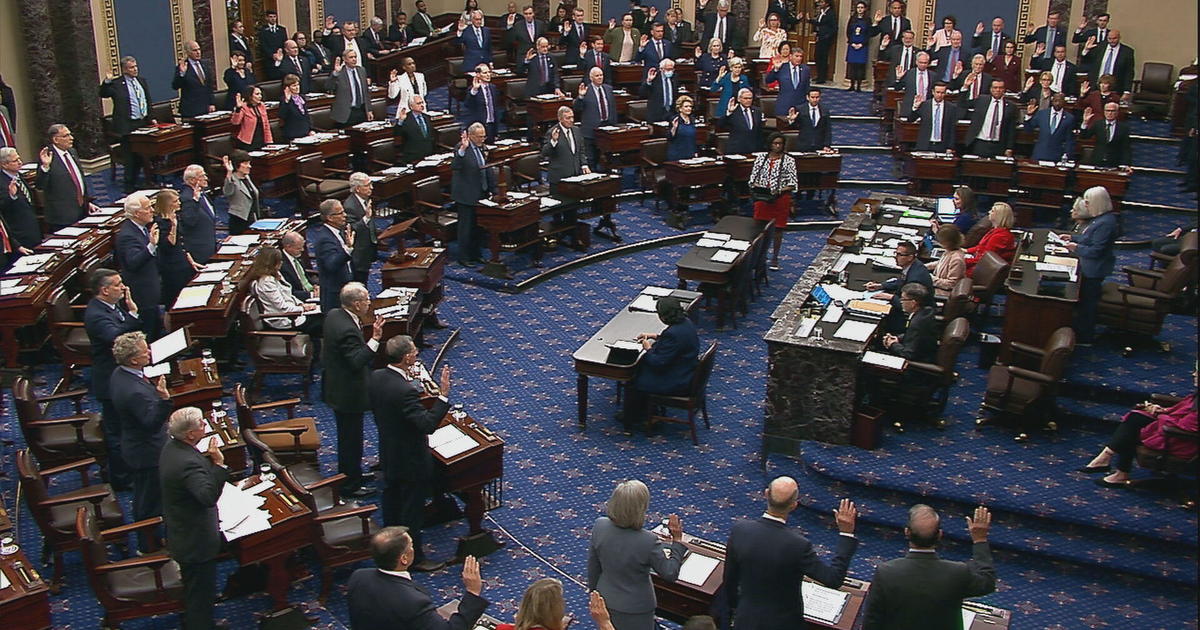Record arrivals of Cubans, Nicaraguans and Colombians fuel 22-year high in U.S. border arrests
A 22-year high in apprehensions along the U.S.-Mexico border in March was partly fueled by record arrivals of migrants from Cuba, Nicaragua, Colombia and Ukraine, Department of Homeland Security (DHS) figures released this week show.
Customs and Border Protection (CBP) processed migrants 221,303 times along the southern border in March, a 33% jump from February and the highest tally since 2000, according to agency statistics. CBP said 159,900 encounters in March represented unique migrants, citing a 28% rate of repeat border crossings.
The spike in migrant arrivals was also partly driven by a 33% increase in apprehensions of single adults, who accounted for 169,062 — or 76% — of all border encounters. Arrivals of migrant parents and children traveling as families and unaccompanied minors also increased, rising to 37,818 and 14,167, respectively.
Arrests of Mexican migrants, the majority of whom are single adults, rose by 22% from February, increasing to 87,388. Arrivals of migrants from Guatemala, Honduras and El Salvador also increased, but on a smaller scale, rising to 21,355, 16,063 and 8,387, respectively.
U.S. authorities recorded encountering a historic number of migrants from countries beyond Mexico and Central America's Northern Triangle, who made up nearly 40% of all border encounters last month.
U.S. border officials processed 32,141 Cuban migrants, an all-time high that doubled February's tally and made Cuba the second largest source of migration to the U.S. southern border in March, only behind Mexico.
Just over 16,000 Nicaraguans and 15,144 Colombians entered U.S. border custody last month — records for both nationalities. The two countries were the fifth- and sixth-largest migrant sending countries last month, overtaking other Latin American nations like El Salvador and Venezuela.
"There's no precedent for this," Adam Isacson, a migration policy analyst for the Washington Office on Latin America, told CBS News. "This change in nationalities is remarkable."
The number of Ukrainians processed at the U.S.-Mexico border also spiked in March to 3,274, a 1,103% jump from February, when 272 Ukrainians entered U.S. custody there. Ukraine became the ninth largest source of migrants to the U.S. border, surpassing some Western Hemisphere nations like Haiti and Brazil.
Because they need visas to fly to the U.S., thousands of Ukrainians have been flying to Mexico to seek entry along the U.S. border since Russia invaded Ukraine. U.S. authorities at official border crossings have been directed to consider allowing Ukrainians to enter the country on humanitarian grounds.
Roughly 96% of the Ukrainians encountered along the southern border in March were processed at ports of entry, as opposed to arrested by Border Patrol for entering the country illegally, according to CBP data.
The sharp increase in migrant arrivals from countries outside of Mexico and Central America's Northern Triangle will pose major operational and political challenges for the Biden administration, which is set to lift in late May a pandemic-era rule that allows U.S. officials to rapidly expel border-crossers, experts said.
"This is a continuation of the trend that started last year for people from multiple countries beyond Central America and Mexico to reach the U.S.-Mexico border, but it's becoming much more accentuated and much more complicated," Andrew Selee, president of the Migration Policy Institute, told CBS News.
Selee noted the U.S. currently can't carry out large-scale deportations to Cuba and Nicaragua due to strained relationships with those countries' authoritarian governments. That means migrants from those countries are allowed to stay in the U.S. while their asylum cases are reviewed, a process that can take years.
While Mexico accepts the returns of its citizens and migrants from Guatemala, Honduras and El Salvador who are expelled by the U.S. under the pandemic-era Title 42 rule, it generally does not allow the U.S. to expel migrants from other countries to its territory.
In March, 81% of U.S. apprehensions of migrants from Mexico and Central America's Northern Triangle along the southern border resulted in expulsions under Title 42, according to CBP data. Conversely, just 2% of the apprehensions of migrants from other countries led to expulsions.
Since it was instituted by the Trump administration in March 2020, Title 42 has allowed U.S. officials along the Mexican border carry out over 1.8 million expulsions of migrants, 75% of which have occurred under President Biden, government statistics show.
But earlier this month, the Centers for Disease Control and Prevention (CDC) said Title 42 was no longer needed to curb coronavirus outbreaks inside migrant holding facilities because of increased vaccination rates and improving pandemic conditions. The CDC said it would terminate the policy on May 23.
The CDC's decision triggered swift backlash from Republicans, who have accused the Biden administration of being too lenient on migrants. But it has also alarmed centrist Democrats, many of whom feel that an even bigger spike in border arrivals could harm their chances of being reelected in November.
In fiscal year 2021, CBP recorded processing migrants over 1.7 million times along the Mexican border, a record. Six months into fiscal year 2022, the agency has already recorded over 1 million migrant arrivals.
In March, CBP processed an average of 7,000 migrants per day along the southern border. But DHS officials are preparing for that number to increase to 12,000 or even 18,000 when Title 42 ends, an unprecedented scenario that would overwhelm the already strained U.S. border processing capacity.
While Republicans and some Democrats have said the administration is not ready for Title 42's termination, DHS officials said they're preparing by mobilizing hundreds of border agents, expanding capacity at processing facilities and securing additional buses and aircraft to process migrants.
Homeland Security Secretary Mayorkas has said that when Title 42 is lifted, migrants will have a chance to seek U.S. asylum. Those who don't qualify for asylum, however, will be swiftly deported, he has said.
But Isacson, the policy analyst, said the U.S. will continue to struggle to carry out deportations of migrants who are not from Mexico or Central America after Title 42 is lifted. Historically, the pre-pandemic deportation tool available to border officials, known as expedited removal, has only been used on Mexican and Central American migrants who don't ask for asylum or who fail to establish credible fear of persecution.
Isacson said the number of migrants from countries outside of Mexico and Central America heading north will continue to remain high as long as travel options remain open and there are sophisticated networks of smugglers facilitating their journey to the U.S.
Cubans, he noted, are first flying to Nicaragua, where they enjoy visa-free travel, and then heading to the U.S. Nicaraguans are trekking through Central America and Mexico to reach the border. And Colombians are flying to Mexico because they don't need visas to get there, before traveling to the Arizona border.
"I think the real growth in migrant arrivals for a while is going to be from any country that's hard to return people to and reasonably easy to get to the United States from," Isacson said.






